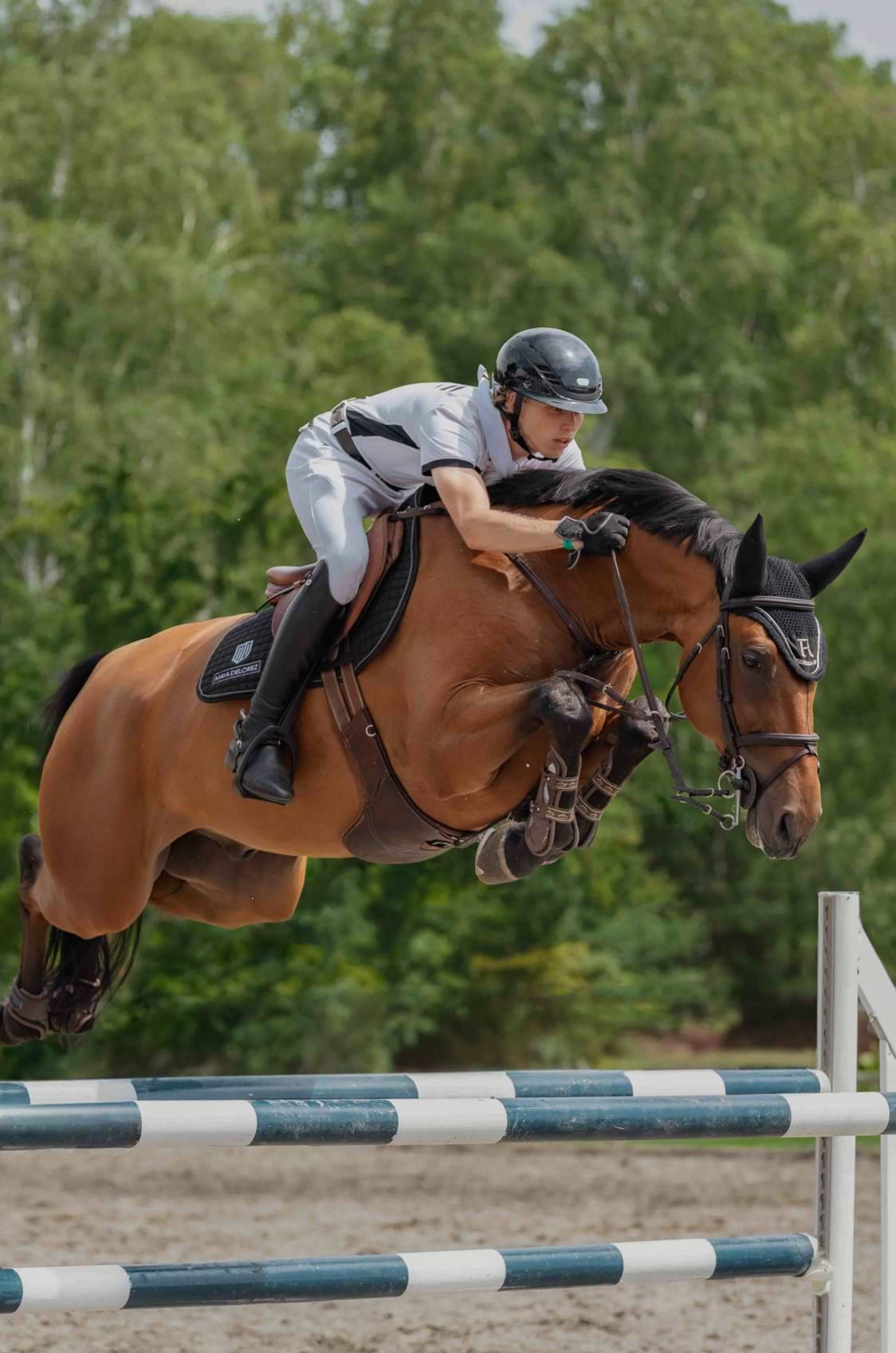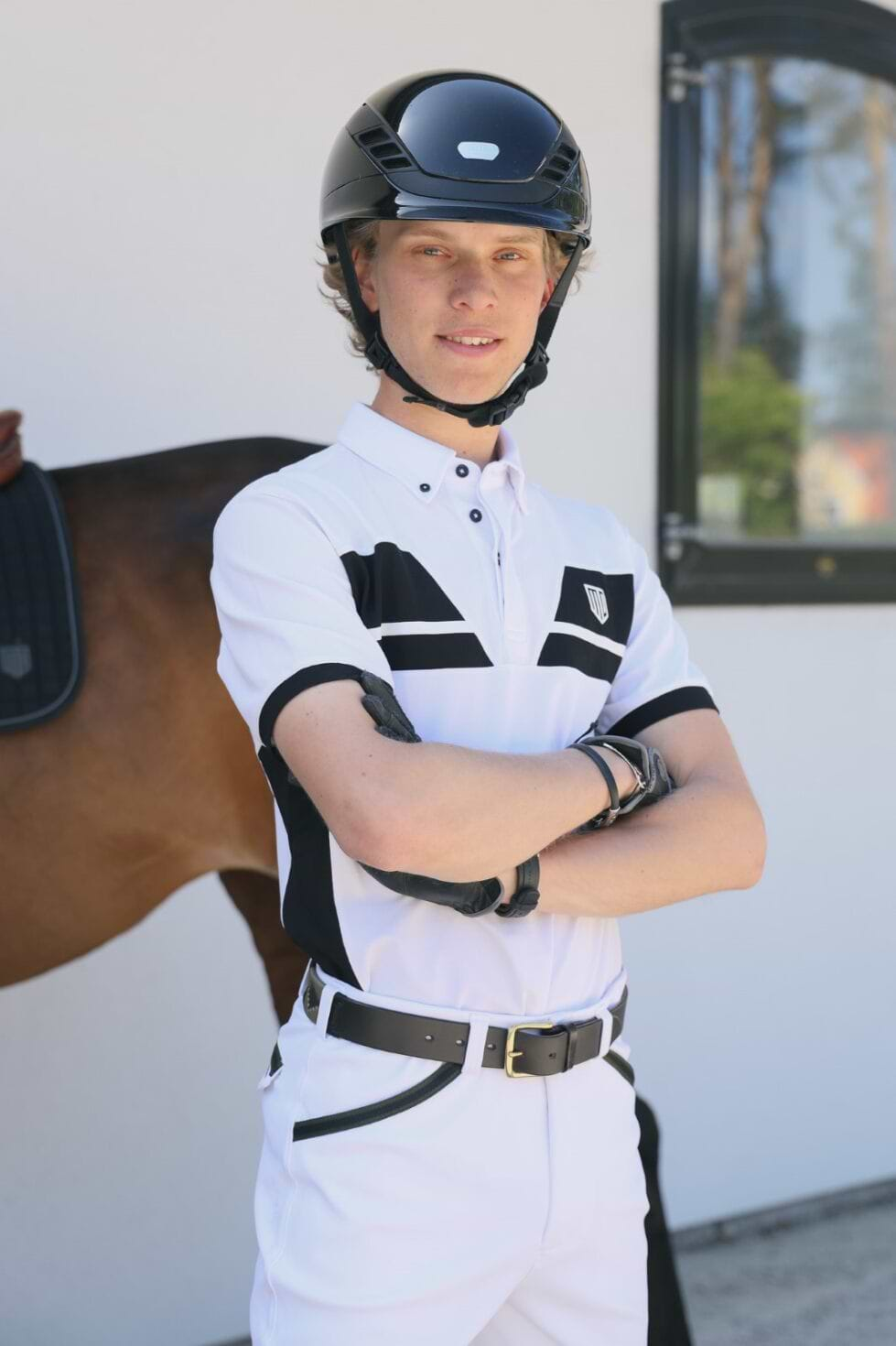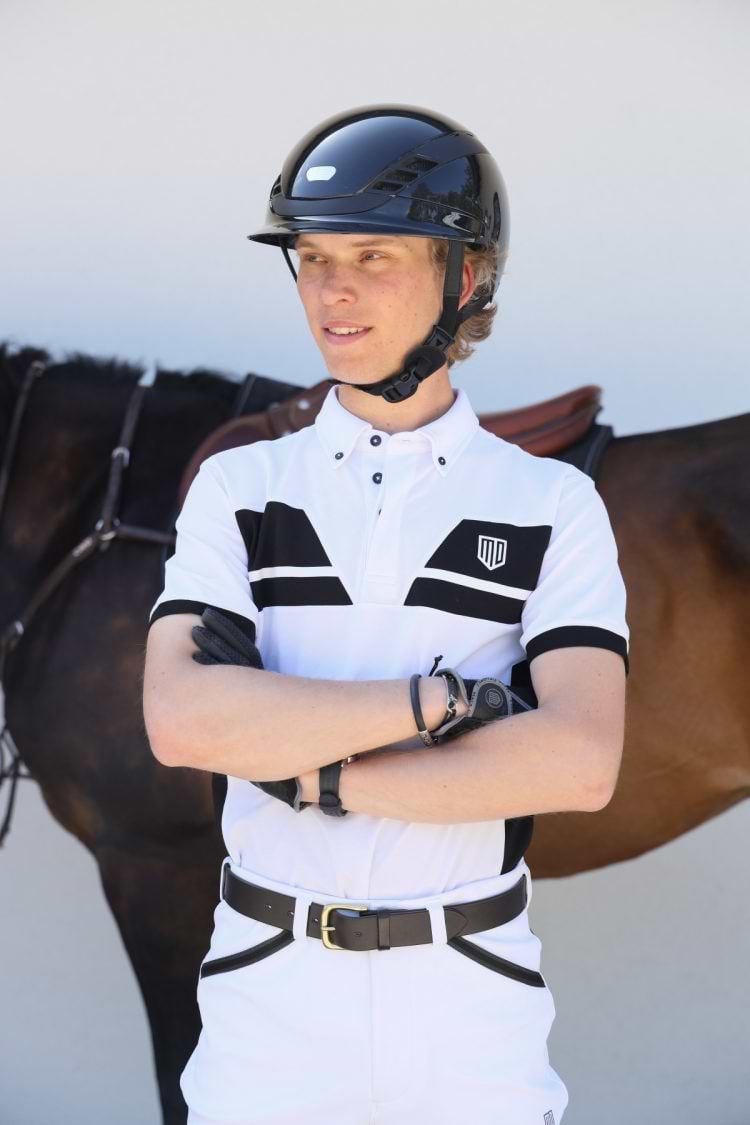André Brandt’s
Warm-Up Checklist
Get to know Swedish show jumper André Brandt as he walks us through his warm-up routine. What will your takeaways be?
Lovisa
Mon 22 Jul - 24

André Brandt’s
Warm-Up Checklist
Get to know Swedish show jumper André Brandt as he walks us through his warm-up routine. What will your takeaways be?
Lovisa
Mon 22 Jul - 24
In the fall of 2023, he made the move to Belgium to work for the Italian show jumper Lorenzo De Luca. With experience from Swedish stables such as Hästak and Magic Park Stables, he today competes in show jumping at both the national and international level. We sat down with him to talk about how it all began and took the opportunity to get a masterclass on warm-ups.
MD athlete André Brandt first got on a horse during a day out with his family at an amusement park in Ronneby, Sweden. For 1 euro, he got to ride on a pony, and that was the start of his lifelong interest in horses. After a couple of years riding at the local riding school, the day arrived when he finally got his very own pony.
– I didn’t grow up in a horse-loving family, but after being at the riding school for a few years, I actually got my first pony. I was about 11 years old. It did really well with dressage, and even though my mom didn’t know a lot about horses, she thought it was important that I trained with a dressage trainer and learnt the basics. It went well most times I competed in dressage which encouraged me to continue.
Since November 2023, André works as a show rider with the Italian show jumper Lorenzo De Luca in Belgium. André is in charge of training and competing his own horses while also occasionally riding Lorenzo’s horses.
– I’m employed by Lorenzo, and it’s his horse owner, but you could say that I am responsible for my horses, and Lorenzo is responsible for his. We have a few young horses, and the rest are older. In total, it’s about 20 horses. I really like it here and feel that I have learnt a lot since moving here.
“In the end, I think you get more out of it by not making big demands at the very start of the ride.”
– André Brandt
To train 10 horses every day demands precision, both when it comes to planning and riding. André describes the warm-up as an important indicator of what shape the horse is in on any given day, and he will adjust the training session accordingly. With a thorough warm-up routine, you get to know your horse and you get a daily check-in with your horse to see how it’s feeling.
Is it important to you to have a checklist that you can run through during warm-ups?
– It’s very important to me. That’s when I check how they’re doing, and I get a feel for where the horse is at. Some days, they can be alert and other days a bit more tired or stiff. Even if I have a weekly plan for what to do each session, it’s important to check in with the horse and adjust the session according to how they’re doing on the day.
What do you focus most on during the warm-up?
– My warm-up is really basic and without a lot of demands. I am always mindful of the fact that there are several hundreds of kilos of muscles that need to be warmed up before I can start making demands. In the end, I think you get more out of it by not making big demands at the very start of the ride. Start out simple and make more demands when your horse has warmed up.

What does a warm-up with a young horse look like compared to with an older horse?
– I usually keep in mind that the older horses need some more time to get going if they’re a bit stiff. It’s important to not work them too early on in the session. I generally do some more lateral movements with the older horses, and I’d say it’s more about “contrasts” when you increase and decrease the canter. It’s very easy and simple, but with some more demands. When I ride horses that are up to six years old, the warm-up is not as long. It’s usually about 15-20 minutes long so that they still have energy left for the entire session. I also start with tempo changes and transitions earlier on in the session. I do the warm-up with somewhat shorter reins so that I’m ready if they would react to something (they are young horses, after all).
Do you do anything different when you’re warming up for a show?
– I would say I have the same routine for my warm-up regardless of if I’m training at home or warming up for a show. It’s a comfort for both horse and rider to have your routine. For the warm-up jumps, I always focus on preparing the horse for the task so that it’ll feel easy. They should be relaxed so that you, as the rider, can start riding without them getting stressed. It’s better to do lower jumps so that you’re not putting too much pressure on them before you’re competing. I think it’s mostly down to the rider when it comes to jumping a final obstacle. The horse can’t tell if the obstacle is a decimeter higher or lower. How you ride at the start is usually reflected in the results you get in the arena.
André’s Warm-up Routine
1. Warm-up walk (about 10 minutes)
“I do a warm-up walk with long reins so that the horses have a chance to get going and look around. If you have a horse that’s a bit energetic, it’s good to spend some extra time on the warm-up walk.”
2. Trot in a long and low frame (about 10 minutes)
“I trot with long reins but with contact on the reins. I ride big circles, both directions, but it’s nothing demanding. The purpose is to get them warmed up and get their circulation going.”
3. Trot work (about 5 minutes)
“Trot work with a bit more contact, with focus on tempo changes and transitions between walk and trot.”
4. Canter (about 5 minutes)
“I follow the rail or ride slightly inside to prevent them from sticking to the wall. After a while, I add a flying change diagonally for both laps. I gradually add in larger circles and tempo changes here too.”
5. Trot work (about 5 minutes)
“I end the warm-up with some more trot work, where I focus on riding smaller circles as well as shoulder-in and haunches in. Then I usually feel ready to get started with the training session.”
